The OSA election for the 2021 Vice President and two new Directors at Large opened on 17 June 2020. Please read the candidates’ statements and cast your ballot. Instructions for electronic voting or a paper ballot were sent to all eligible voters. If you did not receive voting materials, email voting@osa.org or call +1.202.416.1913.
Polls will remain open until 14 August 2020. Results will be announced at OSA’s Annual Business Meeting on Tuesday, 15 September 2020. They will also be available on OSA’s website in late September. For biographical information about the candidates, visit www.osa.org/osa_election.
Candidates for Vice President
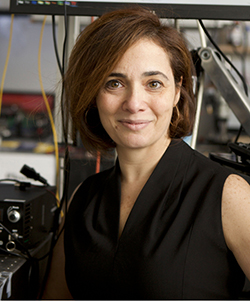
Michal Lipson
Columbia University, USA
OSA has been extremely successful in fostering the rapid progress of optics and photonics, through its advocacy efforts and its effective research dissemination. In the past decade alone, 11 Nobel Prizes have been awarded for work involving optics. Photonics is now being utilized in technologies including autonomous vehicles, neuroscience, and “green” data centers. As one of the founders of the field of silicon photonics, I have seen that field transition from pure academic research to mature industrial products in less than 10 years.
Since becoming an OSA member 20 years ago, I have familiarized myself with the challenges and opportunities of OSA’s different engines. I have been fortunate to serve the society as an elected member of the OSA Board of Directors, as a journal editor and as chair of numerous technical subcommittees and conferences. Recently through my service, I have been able to contribute to the society’s bold and rapid actions to minimize the gender gap and ensure diversity in our community. OSA’s actions—ranging from creating implicit-bias training to providing child care at conferences—set an example for other technical societies to follow.
OSA now faces rapidly emerging challenges. We live in an era in which scientific evidence is becoming less trusted, citation metrics can make or break careers, and conference attendance is restricted due to both pandemic and carbon-emission concerns. If elected, I will devote my efforts to addressing these challenges while ensuring the society’s health and sustainability.
I will cultivate OSA’s creative and visionary nature by developing the society’s next-generation science communication and networking platforms. These might consist, for example, of novel mechanisms to exchange ideas, to work on projects, to learn from each other and to develop new collaborations. My goals are to expand the impact of OSA on the scientific community and beyond, and to serve the interests of our broad spectrum of members from academic institutions to small businesses, large companies, startups, national laboratories and government.
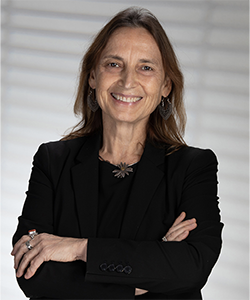
Jannick Rolland
University of Rochester, USA
My first time experiencing light-and-sound special effects, in a live theater, was so wondrous that it drove me to learn more about the underlying field of optics and photonics. I was 16. From that point forward, I pursued a diploma in optical engineering at the Institut d’Optique in France and an M.S. and Ph.D. in optical sciences at the University of Arizona, USA. I joined The Optical Society in 1985 as a graduate student and have benefited both as a member and as a contributor, having published continually in OSA journals since 1990.
After receiving my Ph.D., a first career opportunity was with the University of North Carolina, USA, creating head-worn displays for 3D visualization tailored for guided surgery. This challenge served to launch my academic calling at CREOL at the University of Central Florida, USA, from 1996 to 2008 and through the past decade at the University of Rochester.
It is an honor to be nominated as a candidate for OSA Vice President. I believe that growing as a community is our purpose. OSA plays a critical role in providing opportunities for professional and personal development, from networking to leadership. The Traveling Lecturer program is a fantastic means of life-transforming exchanges. While serving on the OSA Board of Directors beginning in 2013, I launched the Incubator Meetings that help us today see and seize the opening fields of optical science and technology.
Serving as topical editor of Optics Letters since 2013 deepened my appreciation for the efforts put forth in creating our shared base of community knowledge. Volunteering helps to build the community, and philanthropy supports the vision of the OSA Foundation to empower the next generation of leaders. Together, we accelerate the pace of knowledge, creativity, and evolution—OSA core actions I heartily endorse.
As we, as people, and OSA, as a society, continually transform, we shall hone in to realize the emergence of a fully inclusive society. I witnessed advances when serving on the Women in OSA Rapid Action Committee that identified substantial and measurable efforts to speed up progress. And I directly experienced it when serving in leadership roles for the International Optical Design Conference, the Optical Fabrication and Testing Conference and the Freeform Optics Conference.
Thinking ahead, I envision actively assisting The Optical Society in pursuing opportunities that will help strengthen its strategic position, including actions to:
-
further advance OSA leadership in the excellence of publishing and global dissemination of technical information;
-
illuminate OSA’s vision, mission, and core values to encourage further engagement of corporate members;
-
speed the mentoring and inclusion of students around the globe into the OSA portfolio with active initiatives along career and leadership paths; and
-
lead OSA as a partner in advocacy for public policies to support the engagement of the optics and photonics community in addressing global issues.
When reflecting on the role of OSA President, I envision teaming up with all fellow members of the society to set clear goals and objectives, including tractable metrics to guide progress, with innovation and excellence as our polestar.
Candidates for Director at Large
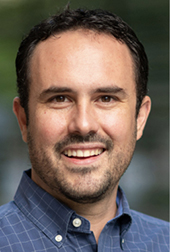
Alvaro Casas Bedoya
University of Sydney, Australia
I am honored to stand for election to the OSA Board of Directors and acknowledge the outstanding profiles of my fellow candidates. Since the early stages of my career, I have been actively involved with OSA and have always been committed to representing the young international community working in optics. I have had the privilege of being elected three times as the president and representative of highly enthusiastic and motivated groups of scientists around the world—the first in Colombia while doing my B.Sc.; the second in Australia during my Ph.D. study; and the third in my present role as the early-career researcher (ECR) representative for the local section in the same country.
While in Sydney, I have also had an influence on the Australian educational sector and outreach in general. In 2014, I proposed and coordinated a student challenge aimed at renewing the international educational resource “The OSA Optics Discovery Kit.” This kit, supplied to schools, teachers and students around the world through outreach programs, contains a variety of optical components and detailed instructions that aim to introduce students to modern optical science and engineering. Together with my colleagues, we tailored the experiential outcomes of the experiments to align with the state and national curriculum.
I proudly embrace The Optical Society’s pathway toward 2030 and its goal of becoming the most recognized and effective organization for scientists, engineers, business leaders, students and early-career professionals in optics and photonics, and I am honored to be one of the 2021 candidates for the OSA Board of Directors. If elected, my priorities would be:
Students and ECRs. I will focus on building opportunities for young scientists on how to connect and learn more about the past, present and future in optics. From a scientific and mentoring perspective, I will leverage and reinforce partnerships and programs such as The Cheeky Scientist, IONS, and the OSA Ambassadors. I will also work toward bridging the gap between industry and academia with mentoring and networking initiatives.
Publications. OSA is the world-leading society for optics and photonics, and I want to strengthen the access to science through its publications in all parts of the world. And through scientific initiatives, incentives and new programs, I will aim to increase the number of journal publications from developing countries.
Conferences, networking and recovering from major worldwide events. Conferences and face-to-face networking have been the main way to create unique opportunities and scientific links. This should not change; however, the world scientific community is recognizing the need for large-scale modern teleconference solutions. I believe that OSA can continue playing a key role internationally in facilitating an online space for sharing scientific knowledge and for alleviating the consequences of recent societal impacts.
Finally, I am committed to the OSA community and respect all of the society’s i4 Core Values: innovation, integrity, inclusivity and impact. I would be delighted to represent all OSA members as a Board of Directors member.
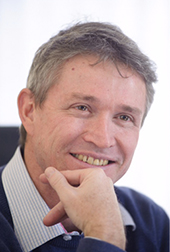
Andrew Forbes
University of the Witwatersrand, South Africa
OSA is a venerable society, steeped in culture and excellence. It has arguably the best portfolio of journals to be found in optics. It is blessed with an active membership with an altruistic streak second to none; this symbiotic relationship has enabled the society to continue in its trajectory of growth. Today, more than half of OSA’s membership stems from outside of the United States—yet it is important to remember the roots of the society, where it came from, to understand the wonderful legacy we have as well as to appreciate the responsibility that this demands of the next generation of leaders.
What I will bring to the OSA Board is an international flavor as well as the time and energy to drive specific programs that address inclusivity. Here are some of my thoughts on OSA now and in the future:
Strengthening the good. There is much that is good about OSA, and we should celebrate and strengthen this. Excellent journals and periodicals, for example, are a hallmark of OSA. There are interesting dynamics here. At the people level, we have professional staff in the background supporting volunteers (editors, referees) who interact with authors. At the technology level, we have the ever-increasing demand for open access and data on demand. At the business end, we have the pressures of new journals and new publishing models. I believe this is the most critical aspect of OSA’s business and should be our highest priority.
Improving member participation. I believe that most OSA members would like to contribute in some way to the society, and need only be provided with the opportunity to do so. We can do much more to mobilize our members, as well as to make the participation in the society more inclusive and transparent. OSA is nothing without its members and volunteers, so I intend to foster an environment that makes it easier to give back to the community through OSA.
Stretching our boundaries. We have a strong society that was born from active researchers in the United States, which should not be forgotten. Now the society is more international, in a culture that transcends nationalities. What remains, then, is to formulate a strategy and implementation plan to promote optics and OSA beyond traditional boundaries. I believe it is incumbent on us to help—through advocacy—in creating sustainable programs in optics in less developed regions of the world. Sometimes a commanding external voice is enough to lift a dream to a reality. Researchers in developing countries need such a supporting voice, and they need this far more than they do OSA’s money. I would like to be the bridge to see this happen.
It is not only geographically that we must stretch. Many would consider OSA to be an “academic” society. I have made the transition from industry to academia, and can see the value proposition in OSA from both perspectives. There are many initiatives we could drive to be more inclusive, to build new partnerships, so that everyone working in optics finds a home within OSA.
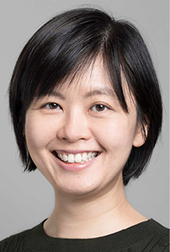
Joyce Poon
Max Planck Institute of Microstructure Physics, Germany
I hope that all who read this are well and staying healthy. As I write this, the world is in the midst of a near-complete shutdown due to the coronavirus pandemic. The opposites feel very strange—much has changed, yet the sun still shines; we are isolated, yet the world is united.
Incredibly, only two weeks ago as I write this, my group members and I were preparing to fly to San Diego for the OFC Conference. We changed our plans at the last minute. The courageous decision to continue with an on-site conference must have been very difficult for the OFC organizers. Within the OSA leadership, my first priority would be to understand and influence decision-making processes. As a professional society, what are our responsibilities to our members, the staff, our profession and the general public? Could there have been better ways to mitigate the financial consequences?
The impressively rapid deployment of online conferencing at OFC and other subsequent meetings showed the resourcefulness and commitment of the leadership of OSA. The online experiment points to a future that may be suitable for many OSA meetings. The financial costs and environmental footprint of holding meetings could be reduced. Conferences could be much more flexible and ad hoc, accommodating a wider variety of topics. The content would be more broadly accessible, which is an opportunity to expand the membership and grow OSA. The online format also makes it easier for participants to balance their professional and personal commitments. On the other hand, the revenue streams for OSA would change. My second priority in an OSA leadership role would be to make online community-building and conferencing more common. This is necessary for the long-term sustainability of OSA and for the ecological sustainability of the world at large.
The pandemic has prompted me to reflect on other changes that may be ahead. I see photonics and optics as crucial in the technology portfolio of the future world. Increased automation in services, manufacturing and transportation will require improved sensors, communication and computation. The next generation of remote interaction will benefit from 3D cameras and projectors and from AR/VR systems. Point-of-care diagnostics and therapies will need miniature sensing, spectrometry, and imaging systems. The backbone for shuttling the data around the planet will be a vast ultrahigh-capacity fiber optic infrastructure. The security of our information and expanded computing capabilities will require fundamental breakthroughs in quantum science.
These are just a few areas in which OSA members will contribute—but success in these endeavors will require expertise from many disciplines. My third priority is to ensure that OSA helps its members engage in emerging areas and build bridges with experts from other domains. Being publicly visible and relevant in impactful technologies will also be necessary to attract young people to our discipline.
In sum, constant change is inevitable, and global crises can accelerate the pace of change. All of us and OSA will have to adapt. Change is never easy—but it also opens exciting opportunities for us to serve our world and communities.
I wish you continued strength in your work, and good health to you and your loved ones.
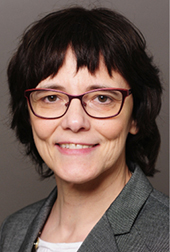
Ulrike Woggon
Technische Universität Berlin, Germany
I am deeply committed to the four OSA Core Values: innovation, integrity, inclusivity and impact. As a member of the OSA Board of Directors, my focus would be on the following topics:
Pioneering research on the frontier of knowledge. Photonics and optical sciences are key fields in modern science and technology, characterized by interdisciplinarity and diversity. Optical sciences are enabling innovations today and in future. However, excellent basic research is just as essential in the entire process of knowledge creation. Ensuring the highest quality standards in journals and conferences and ensuring that knowledge is gained through recognized scientific methodologies are important tasks of our scientific community and longstanding goals of OSA.
I will commit myself to these goals, and furthermore will support all activities that improve science communication to make our research more visible and understandable to the public. Free access to knowledge and knowledge transfer are important topics that I want to promote.
Global responsibility and international exchange. Science needs exchange, direct communication with others and the discussion of ideas within a global scientific community. Scientific organizations like OSA aim at connecting people, initiating networks and cooperation, promoting dissemination of knowledge and acting in a globally responsible way.
In a global scientific world, however, high mobility and travel are increasingly becoming a risk to the environment and to human health. The search for new communication channels conducive to science is a new challenge that we have to face. I will help to explore the full range of communication options that OSA can use in the future to ensure that our scientists stay connected. Science must continue to be an ambassador for international understanding and to counteract tendencies to rebuild national borders and restrictions. Furthermore, it can be very instructive to get in touch with researchers all over the world, to learn more about their specific working conditions and to appreciate their results and efforts under less-than-ideal research conditions.
Diversity and equal opportunity. The Optical Society is committed to diversity. OSA encourages the creation of an environment in which diversity is the norm, in which everyone is supported in their professional development, and in which everyone experiences equal opportunities. I will fully support this policy, encouraging female researchers to participate in OSA activities and promoting productive and beneficial collaboration between scientists of all generations, genders and nations. For young scientists, I will support OSA in all of its efforts to provide them with knowledgeable mentors, role models or just people they can talk with about ideas, questions and problems.
Thanks to the members of the Nominating Council who prepared the 2020 slate.
Eric W. Van Stryland, University of Central Florida, USA, Chair
Pierre H. Chavel, Institut d’Optique, Lab. Charles Fabry, France
Turan Erdogan, Plymouth Grating Laboratory Inc., USA
Ursula Gibson, Norges Teknisk Naturvitenskapelige Universitet., Norway
Eric Mazur, Harvard University, USA
Lenore McMackin, InView Technology Corporation, USA
Ian Walmsley, Imperial College London, U.K.
Xi-Cheng Zhang, University of Rochester, The Institute of Optics, USA
